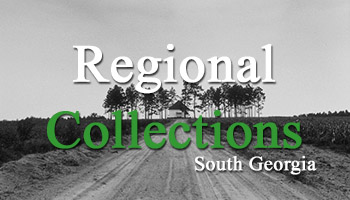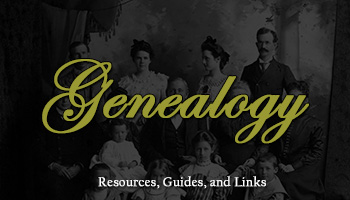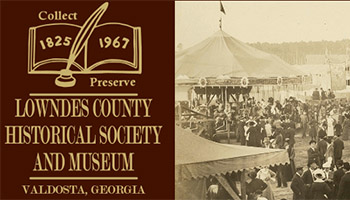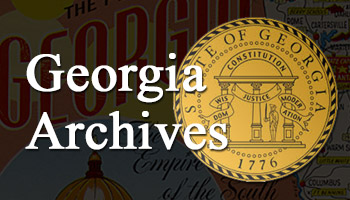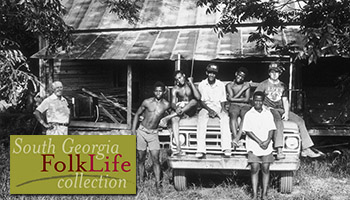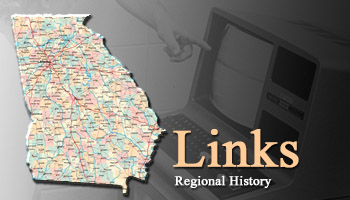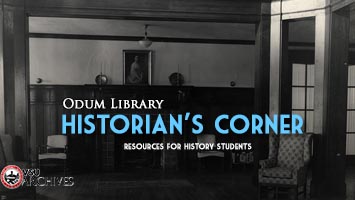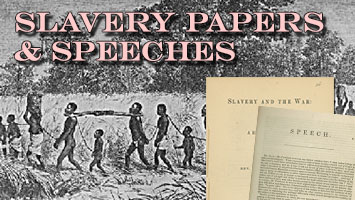Regional History
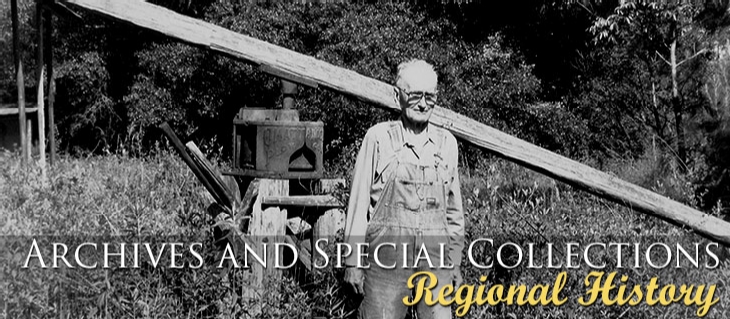
Below are links to research projects that explore the history or surrounding area of Valdosta State University.The authors of these research projects and papers are often Faculty and students of the college. If you create a paper, video, presentation or web page about Valdosta or Valdosta State University, we would be glad to publish it or link it here. Our goal is to provide access to current research on local topics which are often difficult to research.
Community Archives, Digitization, Access, and Preservation Partnership
Together we can preserve and document the rich history of South Georgia by digitizing a portion of your holdings, making them available through online repositories at the Valdosta, state, and national levels, and providing long-term security with digital items preserved in a state-of-the-art digital preservation system. Your materials stay in their local homes for community access but will be widely available. You will be able to tell the stories of our area to a national audience. For more information click here: https://archives.valdosta.edu/online_exhibits/community-archives/index.html
Regional History: Valdosta State Graduate School Theses and Dissertations
"Almost Too Terrible to Believe": The Camilla Georgia Race Riot and Massacre, September 1868," by Joshua Butler.
Camilla, Georgia, became the site of a racially motivated political riot on Saturday, September 19, 1868. Determined to promote political and social reform with an organized rally, at least 150 freedmen, along with Republican political candidates, advanced toward the town’s courthouse square. Local citizens warned the black and white activists of the impending violence and demanded that they forfeit their guns, even though carrying weapons was customary at the time. The marchers refused to give up their guns and continued to the courthouse square, where local whites fired upon them. This assault forced the Republicans and freedmen to retreat as locals gave chase, killing an estimated fifteen protestors and wounding forty others.
"Portraits of the Past-Perspectives for the Present: Segregated and Desegregated Schools in Early County, Georgia, 1960-1981," by Charla Houston Allen.
American public school resegregation is a rarely discussed reality, as are the origins and effects of desegregated public schools. This qualitative portraiture study examined segregated and desegregated public schools in rural Early County, Georgia, from 1960-1981 to give a more complete accounting of the time.
"From Faith To Faith: The Rise and Spread of Catholicism in Georgia, 1732-1832," by Matthew Blake Strickland
The research holes of other historians reside in the fact that the Catholic story has been neglected in discussions of Georgia religion. There have been many neglected points made about Catholics in Georgia during the era of the early republic when there is ample source material to appropriately discuss this group of Christians.
"The "Gold Standard" of the Wiregrass Primitive Baptists of Georgia: A History of the Crawford Faction of the Alabaha River Primitive Baptist Association, 1842-2007," by Michael Holt.
The study of Primitive Baptists to date has focused primarily on the origins of the denomination in the 1830's. However, few works trace the subsequent development of the group. The object of this study was to examine the origins and development of a single Primitive Baptist Association and interpret their meaning in relation to the Primitive Baptists of the Wiregrass Region of Georgia as a whole.
"The Politics of Race and Class and the Development of Public Education in Georgia: A Qualitative Study of Retired African American Teachers' Perspectives on Schooling From 1930 to 1970," by Melvin Anthony Shelton.
This dissertation is a qualitative study that chronicles the development of public schooling in Georgia and uses interviews to focus on the perspectives and meaning that 11 retired African American public school teachers associated with their experiences as teachers and students between 1930 and 1970. A tape recorder and field notes were used to record the interviews. The participants' stories were transcribed and reconstructed into portraits.
"Georgia Women Writers: A Narrative Study of Professional Georgia Women Writers to Determine Implications for Educational Change," by
Ragan-Martin, Wilma Maudrene Bronwyn
By examining the lives of successful women writers from South Georgia, I have been able to discover patterns in their lives that encouraged these women to become writers. By using life story interviews and narrative inquiry, I was able to determine specific implications for educational change. These factors can be examined at school and at home to encourage both girls and boys to become more confident in their writing ability. In addition, all three writers gave generous suggestions to help with the teaching of writing. Three life story interviews of published women writers from South Georgia were completed. The transcripts were examined and analyzed in order to discover patterns in the lives of these women.
Regional History: Undergraduate Research Papers
"Lowndes County Emigrants to Liberia," Eric DeWayne Jackson.
One hundred and twelve Black men, women, and children emigrated from Lowndes County Georgia to Liberia in 1871 and 1872, just 7 years after the Civil War. These were families of farmers, craftsmen, and laborers who left Lowndes County looking for a better life, one free of terrorism and racism. Here is a list of their names, ages, occupations, and religions.
Lowndes County During Reconstruction," Bill Daugherty.
From a historical standpoint, the horrors of the War Between the States ended at the Appomattox courthouse in 1865. In Lowndes County, Georgia, life after the war was difficult and troublesome. Many problems trace their roots to the difficulties of that time period.
"Influenza in Lowndes County," Ashley Helton and Vineet Kumar (pdf).
Doc Holiday
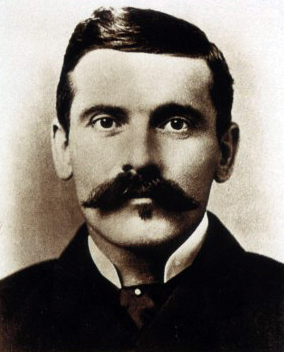 "Doc Holiday'Swimming Hole Incident," Allen Folsom.
"Doc Holiday'Swimming Hole Incident," Allen Folsom.
The swimming hole incident has been passed on and told by many in Valdosta. The presence of the Negroes in their swimming hole enraged Doc, and he drew his pistol-shooting over their heads to scare them off.
"Doc Holiday and the Courthouse Incident," Allen Folsom.
Many men, after being fed up with the way they believed the town was being governed, came up with plans to blow up the courthouse. A group of young men marched down to the courthouse square.
Doc Holiday, Lowndes County Historical Society Webpage
Race Relations
"The Coverage of the Death of Martin Luther King, Jr. by the Valdosta Daily Times," Forest Holder.
On April 4, 1968, one of the greatest tragedies of the Civil Rights Movement occurred in Memphis, Tennessee. That tragic event is, of course, the assassination of Dr. Martin Luther King, Jr., and it was covered by our very own Valdosta Daily Times.
"Family History," Zach Friis.
Who descended from slaves? Who descended from slave owners? Family History tells about Genealogy and how to find your family's history.
"A Three Year Dream," Zach Friis.
It has been close to 135 years since the Civil War took place and even more years have passed since the first slaves were traded on the beaches of this state. Through out the centuries thousands of black men and women have died, either serving their masters or their country, and their deaths have gone largely unnoticed by the general population.
"What is going on at Valdosta High?," Forest Holder.
Is separate but equal considered racist, or even prejudiced? How about separate and unequal? Upon examining the two proms at Valdosta High School, primarily by survey, I have come to the conclusion that no definite conclusion can be reached.
"Integration of VSC," Jacelyn Lane.
The events of the Civil Rights Movement were prevalent in the South; Lowndes County and the city of Valdosta even had their share of the movement. In September of 1963, three hundred freshmen entered Valdosta State College; two of those freshmen were black.
"Black Representation in the Valdosta Daily Times," Jacelyn Lane.
The articles are mostly about blacks committing crimes, in later years many civil rights stories appear, and eventually came the few and far between stories of a good deed by a black person. Blacks were discriminated against even in the newspapers.
"Project Change: Lowndes County Advisory Board," Brandy Sumner.
Valdosta's Project Change, one of only four such programs set up in the nation was established in 1991 in order to help combat friction between different racial and ethnic groups.
"Affirmative Action and the March in Tallahassee," Brandy Sumner.
On March 7, 2000, 30,000 marchers came to Tallahassee to protest Governor Jeb Bush's proposed Florida One Initiative. Bush created this initiative in hopes of deferring Florida voters from voting in favor of Ward Connerly's proposed legislation regarding affirmative action.
"Desegregation in Lowndes County," LaShayla Waters.
In December of 1967, Marker Dern, a hearing examiner for the Department of Health Education and Welfare (HEW), recommended a $342,000 cut in federal funds to Lowndes County Schools for non-compliance with the Civil Rights Act of 1964; this prompted the Board to finally take action (Moore 5).
"Albany's Civil Rights Movement," LaShayla Waters.
The civil rights movement in Albany is perhaps the most famous civil rights episode in South Georgia's history. Years of frustration and treatment as second class citizens prompted blacks in Albany to react.
Notice:
The VSU Archives would like to encourage and promote local historical research. To this end, Graduate and Undergraduate Student papers relating to Lowndes County, South Georgia, and Georgia history will be posted here. If you are interested in publishing regional research on our website, please contact us.
Historical Collections
They Endure: A Chronicle of Courage Oral History Project
Georgia Public Library Service has digitized over 80 oral history interviews held by the Roddenbery Memorial Library in Cairo, Georgia, and recorded during the early 1980s with African American residents of that area. The collection, titled “They Endure: A Chronicle of Courage,” also includes 50 digitized slides depicting local African American churches and cemeteries in Grady County. Digitized collection materials are available online through the Digital Library of Georgia and Soundcloud.
Valdosta State History Research Links
This link contains student and faculty research, about figures at the college, Lake Louise Research, and the history of race in Valdosta and the surrounding area.
Use these links to search our indexes of the Campus Canopy, Scrapbook, and VSU Video Collections.
The Campus Canopy was the student newspaper before its name was changed to the Spectator. Use this index to find articles of interest on past campus figures and events.
The Publicity Scrapbook was produced from the 1930s to the 1950s and contains articles from Georgia newspapers about the college.
The VSU Video Collections contains recordings made by the university, such as sporting events, important functions, and VSU TV productions.
Geology Professors and Students Papers, Honors English Students Papers, etc.
Links to Useful Archives and Libraries
Digital Library of GeorgiaA gateway to many digital resources related to Georgia's history and culture found in books, manuscripts, photographs and newspapers, including the VSU Archives Image Collection.
New Georgia Encyclopedia
Articles and images about people, places, events, institutions, history, and culture of Georgia--includes articles about the college and the area.
South Carolina Historical Society
Center for the Study of Southern Culture
A site from University of Mississippi for the study of Southern Culture and History
South Georgia Regional Library
The library serving Valdosta and the surrounding area.
Lowndes County Historical Society
The homepage of the Lowndes County Historical Society and Museum.
South Georgia Historic Newspapers Archive
An incomplete sketch of the people, places, and historic events of Ray City, Georgia. A local history project of the Ray City Community Library.
"Vanishing Georgia comprises nearly 18,000 photographs. Ranging from daguerreotypes to Kodachrome prints, the images span over 100 years of Georgia history. The broad subject matter of these photographs, shot by both amateurs and professionals, includes, but is not limited to, family and business life, street scenes and architecture, agriculture, school and civic activities, important individuals and events in Georgia history, and landscapes."
"Vanishing South Georgia exists primarily to bring attention to the myriad forms of vernacular architecture once common throughout the region. Many of these structures were built during the sharecropping and tenant farming eras, and as a result have long ago been abandoned." - Brain Brown
Huxford-Spear Genealogical Society and Library
The Huxford-Spear Genealogical Society, of Homerville, features the Wiregrass Georgia Pioneer Surnames and Genealogies index.
Ancient Civilizations of Georgia
LostWorlds.org is an online interactive museum devoted to educating the public about the prehistoric indigenous civilizations that existed throughout the Americas utilizing advanced internet technologies such as streaming video documentaries, 3D computer animated reconstructions, Quicktime VR and more.
Georgiainfo@galileo from the University of Georgia. Features links to Native Georgian resources.
The Altamaha Riverkeeper is a grassroots organization dedicated to the protection, defense and restoration of Georgia’s biggest river---the Altamaha--- including its tributaries the Ocmulgee, the Oconee and the Ohoopee.
Berrien County Historical Photo Collection
Official Historical Photos Project of the Berrien Historical Foundation
Georgia’s Museum of Agriculture and Historic Village opened as the Agrirama on July 4, 1976. The grounds consist of five areas: a traditional farm community of the 1870s, an 1890s progressive farmstead, an industrial sites complex, rural town, national peanut complex, and the Museum of Agriculture Center. Over 35 structures have been relocated to the 95-acre site and faithfully restored or preserved. Costumed interpreters explain and demonstrate the life-style and activities of this time in Georgia’s history.
The Georgia Southern Museum where collections, exhibits, and programming interpret the natural and cultural history of Georgia’s coastal plain and the exciting research and work taking place at Georgia Southern University.
Hazlehurst-Jeff Davis Co, History
Liberty County Historical Society
Old Jacksonville, Georgia - Where History Lives
Okefenokee National Wildlife Refuge
Most of the historic buildings in Georgia—in its cities, small towns, and rural countryside—are vernacular in character. Vernacular architecture can be difficult to define and is often characterized by what it is not: it is not high-style design created by professional architects and based on academic or theoretical principles. Rather, it is the skill of traditional building construction passed from one generation of builders to the next in a practical hands-on way through the use of materials, form, and ornamentation.
The Midway Museum is the home to a prodigious collection of heirloom furnishings, paintings, artifacts and historical documents as well as genealogical books of reference that many prominent families and their ancestors donated from the colonial period.
Southern Forests for the Future
A resource featuring highly detailed maps of Southern forest, urbanization, and other data-set based maps.
Archives & Special Collections
-
William H. Mobley IV Reading Room
Odum Library
1500 N. Patterson St.
Valdosta, Ga. 31698
archives@valdosta.edu -
Mailing Address
1500 N. Patterson St.
Valdosta, GA 31698 - Phone
- Phone: 229.333.7150
- Archivist
- Phone: 229.259.7756
Monday
9:00 am - 5:00 pmTuesday - Wednesday
9:00 am - 7:00 pmThursday
9:00 am - 5:00 pmFriday
9:00am - 3:00 pm
